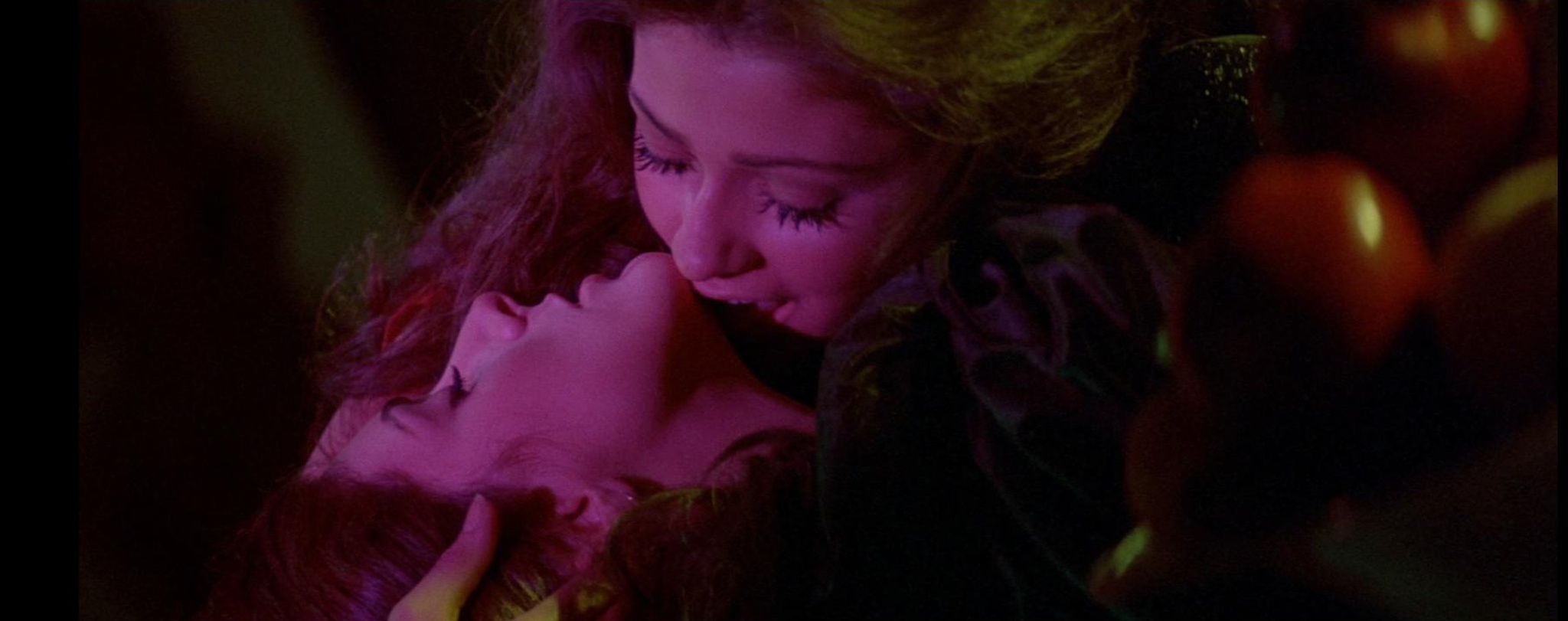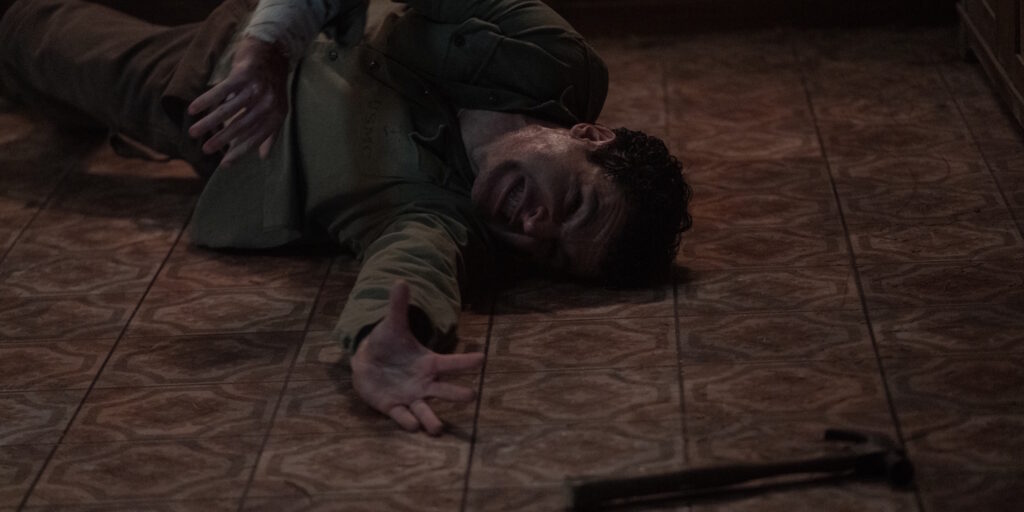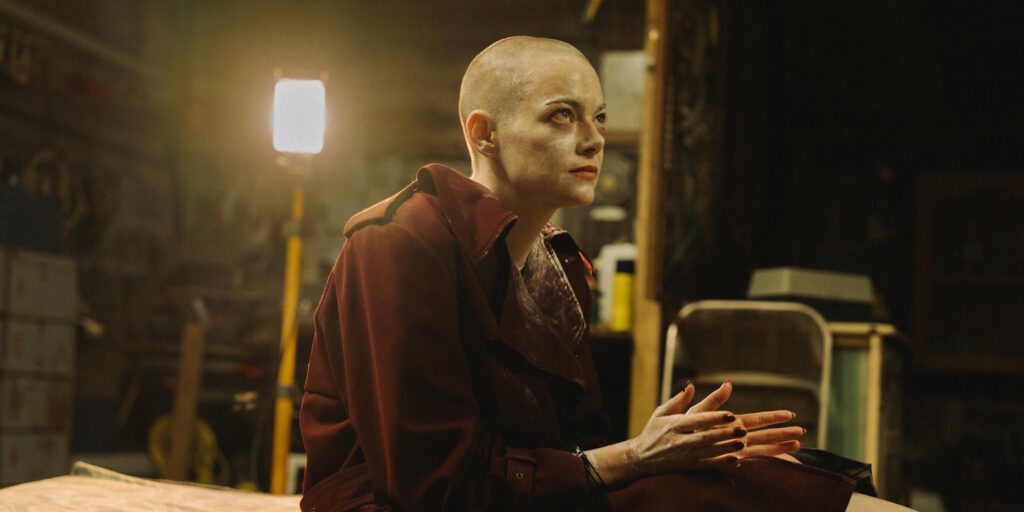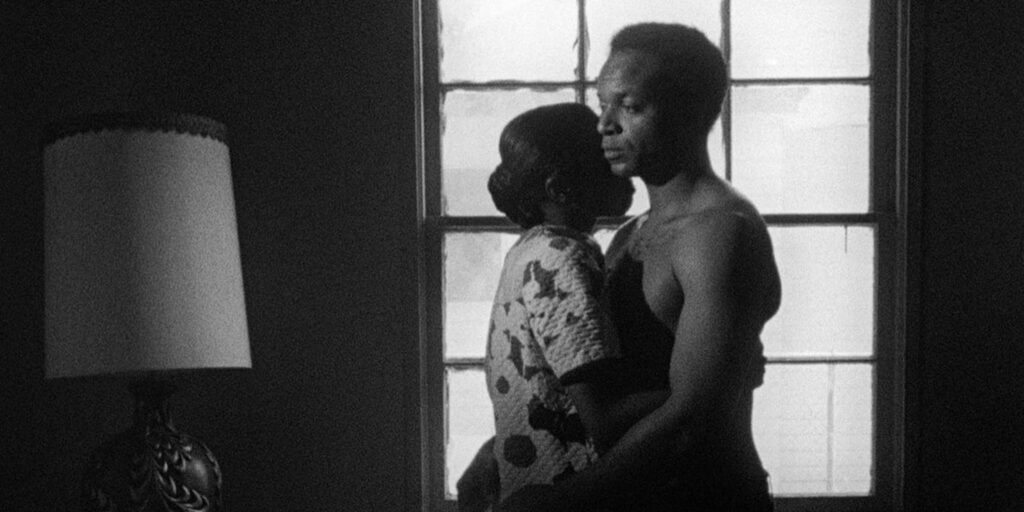[Note: This essay was originally published at Cinema St. Louis’ The Lens.]
Altman, Scorsese, Coppola, Bogdanovich, May, Nichols, Ashby, Friedkin, Mazursky, De Palma, and even Speilberg and Lucas: These are the names most commonly associated with New Hollywood. The movement – as it can be seen now – was born when the long-established American studios failed to keep up with radical cultural shifts during the ’60s and began to follow the money. Audiences were flocking to products from the tightened purse strings of the likes of Roger Corman, who spat out films quickly and on the cheap with total budgets comparable to one studio picture’s craft services.
With themes and content catering to increasingly liberal cultural values, some of these B-movies eventually moved away from the bottom half of a double bill at drive-ins and onto more accessible neighborhood screens. The Trip, the 1967 Peter Fonda-starring, LSD-fueled road movie directed and produced by Corman for independent studio American International Pictures, reportedly sold 60 times its original budget of $100,000 in tickets. Soon after, the next Zeitgeist-tapping, Peter Fonda-starring motorcycle odyssey, the inexpensive and independently produced Easy Rider, took the fourth spot at the 1969 box office – just above 20th Century Fox’s costly Broadway musical adaptation of Hello, Dolly! In looking at their shrinking profit margins against the indies’ growing ones, all bets were called off for the major studios.
They let the outsiders in – the aforementioned film-school “movie brats,” television directors, comedians, and film critics among them – to exercise their cinematic creativity within budgetary limitations, mimicking producers like Corman by giving opportunities to the hip unproved. Many of the 1970 titles in Cinema St. Louis’ 2020 edition of Golden Anniversaries are, in one way or another, beneficiaries of the old guard’s new school of thought – including M.A.S.H., The Traveling Executioner, Performance, Husbands, and even eventual Best Picture Oscar winner Patton (co-written by pioneering movie brat Francis Ford Coppola).
“King Leer” himself, the breast-obsessed auteur Russ Meyer, is almost never mentioned among this New Hollywood elite. However, his Beyond the Valley of the Dolls – one of the most profitable films featured in this year’s festival’s crop – is wholly representative of the time and the conditions that sparked the movement. Half a century on, the satire fueled by sex, drugs, and rock ’n’ roll has grown in stature, but mostly only among those willing to accept that trash can also be nurturing. Purveyors of great cinema, the Criterion Collection has released the film under its exalted banner, but, again, even that seems to come with caveats. Beyond the Valley of the Dolls is largely – and, with its sexploitation-satire origins and hyper-horny telling, understandably – regarded as a kitsch object suprême. The Pope of Trash himself, John Waters, has said that Meyer made the greatest movie ever made – and ever will be made – in Faster, Pussycat, Kill! Kill! (1965). Admittedly, Waters is as erudite and knowledgeable a cinephile as any, but his claim can open the door for dismissal from those with “refined” “good” “taste.”
Who needs those squares anyway? Meyer and his first Dream Factory foray (his second, The Seven Minutes [1971], is a fans-only curio) may represent a small blip on the timeline of narrative American filmmaking during the ’70s, but this color-splashed, widescreen spectacle is among the most incredible products to ever come from the studio system.
After Jacqueline Susann failed twice at writing a sequel to the 1967 film based on her sensational book Valley of the Dolls, 20th Century Fox had to do something with the Beyond title to which they owned the rights. In comes Meyer, a World War II battleground cameraman turned independent filmmaker whose 1968 sexploitation flick, Vixen, reportedly had a profit margin even wider than that of The Trip. He and his screenwriting recruit Roger Ebert, who had written positively about the director’s cinematic prowess in the pages of the Chicago Sun-Times, were invited behind the studio gates to take a stab at something original. (To be fair, Mark Robson’s adaptation of Susann’s book might fit in well with Meyer’s backwoods hothouse melodramas Lorna [1964] and Mudhoney [1965] if it changed locales, added some large bare breasts, and were more self-aware.)
The idea that the contemporary king of pornography and the future’s most well-known film critic – along with a cast of Playboy Playmates, nonprofessional actors, scensters, and the Strawberry Alarm Clock – successfully invaded the system is so outlandish, a script of the making of Beyond has been circulating around Hollywood for the past few years as its own feature – at one point with Will Ferrell attached to play Meyer. But the concept seems redundant because the film itself is already one of the most evocative of its era. Straddling (ahem) the line between parody of and homage to traditional Hollywood tropes, Meyer’s anarchic sex romp signaled a death knell for both old-fashioned modes of filmmaking and the “All You Need is Love” era that had already violently soured since its inception.
Screenwriter Ebert has said that during the writing process he and Meyer threw in everything and the kitchen sink, and, within mere weeks, gleefully banged out a satire with no real basis in reality other than that of movie genres. Intentions be damned, the fiendishly funny finished product has its sights perfectly calibrated toward contemporary American mores, a culture of capitalism, and at the great gender divide.
The two outsiders decided to lambast everything 1970 L.A. – or at least their perception of it – by retaining the 1967 melodrama’s trio of fame and fortune-seeking Hollywood ingénues and turning everything else on its head. Here, the central trio (played by Playmates Dolly Read and Cynthia Myers, and aspiring actress Marsha McBroom) are a band called the Carrie Nations, a psychrock/pop outfit (with actually good music written for the film by Stu Phillips) who are about to encounter the seven deadly sins in their grooviest of forms: drug-fueled “happenings” live-soundtracked by the Strawberry Alarm Clock; an ever-revolving roundabout of lovers of any gender; hangers-on who want a piece of the pie; and a fateful night that erupts in horrific violence a little too familiar after 1969’s Tate/LaBianca murders perpetrated by Charles Manson’s clan. Ebert and Meyer really do find a place for nearly every genre and genre trope, so much so that if a viewer were to experience all of the bodily reactions film scholar Linda Williams assigns to melodrama, pornography, and horror, they might end up like John Cassavetes at the end of Brian De Palma’s The Fury (1978).
A possible full body explosion would also be aided by Meyer’s over-the-top style. Every element of his mise-en-scène here is so far-out that it might appear that 20th Century Fox allowed Meyer to supply his cast and crew with an unending supply of amphetamines. His cuts are as fast as today’s action films, with Eisensteinian montage thrown in for good measure and providing some of the best laughs present. There are practical reasons for the Meyer filmic rhythms, various justifications bandied about from those close to and knowledgeable about the filmmaker. Supposedly, footage from his previous indie, Cherry, Harry & Raquel!, was destroyed, causing the director to edit around the missing footage. The whiplash-inducing results fit so well within his aesthetic and values, Meyer simply continued increasing his tempos. Another might say that he hated seeing actors blink, so he’d cut around them doing so, adding to their already turned-up performances. Meanwhile, others say budgetary constraints made camera movement impossible, so Meyer adapted and created the illusion of movement through rapid editing.
These reasons seem to point to Meyer as an auteur by accident. Although happenstance and working conditions may certainly have influenced Meyer’s choices, when reviewing his filmography, one can clearly see a gradual development of an artist working in an imitable mode. Yes, his camera is stationary, but the innumerable set-ups are also purposefully composed and artful, somehow colorful even when they’re in black-and-white. Meyer claimed his major filmmaking influence was Al Capp’s “Li’l Abner” comic strip, and this cartoon tutelage aligns his style closer to other film satirists like Frank Tashlin or Jerry Lewis than his softcore pornographic brethren.
But Beyond the Valley of the Dolls is more like Paul Verhoeven’s Starship Troopers (1998) than any of Tashlin’s or Lewis’ work. Like the fascist space opera, Meyer’s knotty satire is both wagging a finger at the thing and a supreme example of the thing. His films had increasingly become aware of their effects on an audience looking for titillation, and Meyer and his screenwriters started mixing them with social satire. Vixen, for example, surely aroused viewers in spades, but even though Erica Gavin (playing lesbian lover to Cynthia Myers’ Casey here) has all kinds of sex – straight, gay, and even incestual – throughout Vixen, that same audience is challenged to confront her stridently racist and downright deplorable actions.
Although Beyond earned an X rating, its prurience is tame compared to Meyer’s previous films – something the director regretted after aiming for an R rating by tamping down the sex and nudity. Nevertheless, the film is filled to the brim with “transgressive” behaviors: drugs are ever present; free love is performed without regard to emotion; queerness is (to an extent for the time) normalized; and gender roles are completely deconstructed and remixed. Meyer may moralize these notions in his intentionally silly coda, but even the punishments for said transgressions aren’t moral judgments. Instead, they’re a prompt for his audience to negotiate between being turned on by both the scene and the way he and Ebert destroy it.
In 2020, however, some of the problematizing present is troubling. In the climax, the Shakespeare-spouting record producer Ronnie “Z-Man” Barzell (John Lazar) is revealed to be a trans man just before lopping off the head of Lance (Michael Blodgett), his sexual conquest, set to the Fox-logo fanfare. He then proceeds to murder the film’s other queer characters. Ebert, who claims to have invented Z-Man’s great reveal in a moment of inspiration, says Meyer approved because “you can never have too many tits.” Clearly, the two were unaware of the accumulation of years of cinematic doomed queer characters and queer murderers and were working toward pure shock. B. Ruby Rich, the great feminist and queer-film theorist, once justified the portrayal as an act of queer revenge.
More viable is her linking Meyer’s personal predilection for assertive women with a deconstruction of gender norms present in his work. The director’s fantasies are thrust upon the screen, which grants his female characters power largely unseen in cinema before this: They’re hypersexual, smarter than their weak male counterparts, and always take center stage in the narrative.
The image of Ashley St. Ives (Playmate Edie Williams and future Mrs. Meyer) from the perspective of impotent Harris (David Gurian) as she towers over him likens her to a superhero, with her femininity as her superpower. Beyond also affords its Black characters, another often marginalized group, a fully fleshed out narrative of love, betrayal, and reconciliation – complete with an idyllic roll in the grass for two of them, a sight rarely seen in mainstream films of the time.
With these more progressive representations, the dizzying kaleidoscopic construction, and slightly askew potent quotables, the prominence of Meyer’s mainstream outing among cult films is understandable, particularly when it comes to queer audiences. For that group, the bald-faced transgressions against pervasive cultural norms are as identifiable as the “closeted” layers of truth buried deep within its satire. Beyond the Valley of the Dolls is indeed riotously enjoyable, but also contains complex multitudes that, for the enlightened few, are as invigorating and rewarding as more well-respected films in the hallowed canon. Those who are blind to its richness are welcome to, well, to quote the film itself, either “Find it!” or “Go screw.”




